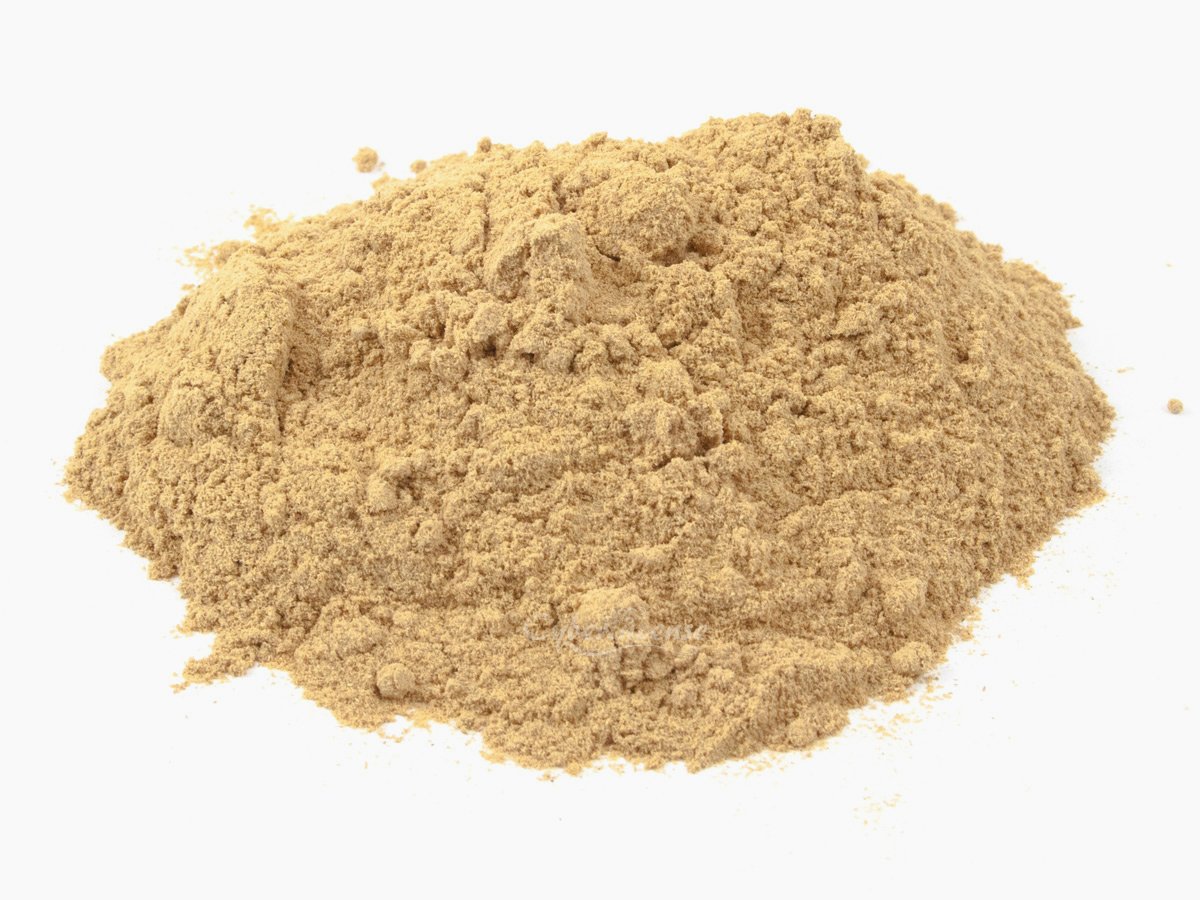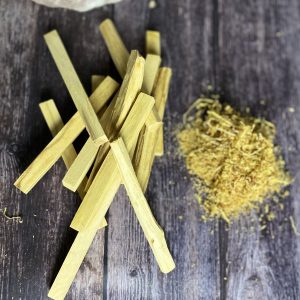Description
Introducing Santalum spicatum
Australian sandalwood has been classified as Santalum spicatum, based on the characteristics it shares with the earlier known sandalwood Santalum album. It was known as Uilarac, Wollgat, Wolgol and Waang by the Noongar community of aboriginal people in Australia’s south western coast.
This beautiful Incense powder has been grown in WA in Australia. Australia has been growing Sandalwood for over 100 years and it is native to Australia (Santalum Spicatum).
These trees and the area where it is grown has strong sustainable practices and the best thing ever it is native to Australia, grown and produced by farmers in WA.
This Sandalwood incense powder has the most beautiful smell when burnt, you can use it as a loose powder, placing a small amount like a pyramid on a heat proof dish or bukoor and gently lighting the top, making sure once the flame has started to gently blow it out and allow the powder to smoulder, leaving the most sweet smelling Sandalwood behind. You can use this in creating incense at home.
Relieves Anxiety
The scent being released by sandalwood incense is known to lower the levels of anxiety as well as stress. So if you’re feeling tensed or on edge, burning sandalwood incense can help you relieve your anxiety. Based on a study, sandalwood incense was tested on women undergoing breast biopsies and they found out that the aroma helped these women to calm down.
Enhances Sleep Quality
Burning sandalwood incense is also great for people who suffer from sleeping problems like insomnia. It’s because the aroma of sandalwood is a great sedative. It can calm down your worried mind, helping you get a night of better sleep.
Aside from people who suffer from sleep disorders, it is also great for those who had a long and busy day. There are times when we find it difficult to sleep no matter how tired we are. Since sandalwood has been honoured for its relaxing odour, burning an incense stick before going to bed can set your mood for a comfortable and relaxing sleep.
Lowers Blood Pressure
The aroma given out by burning sandalwood incense can also lower systolic blood pressure especially when you’re feeling worked up from stress. It can help you calm down, protecting you against heart diseases such as stroke, heart attack, and others. However, is not an alternative medicine you can use to cure high blood pressure, but it can help lower your blood pressure naturally.
Heals Wound
Healing wounds is a surprising benefit people can get from burning sandalwood incense. It can heal wounds because it activates certain olfactory receptors that impact other processes in the body such as stimulating keratinocytes to make keratin, which makes up the outermost layer of the skin. Since sandalwood incense can increase the production of keratin, it helps in healing wounds faster.
Acts as a Natural Air Freshener
Sandalwood has a fragrant smell and burning sandalwood incense can make your home smell amazing. It can help you get rid of unpleasant odours at home. Since sandalwood is a natural product, it is safer to use compared to air fresheners bought in stores because it does not add harsh chemicals to the environment.
Safety Tip
If you decide to burn sandalwood incense in your home, make sure that the room has good ventilation. Though sandalwood incense can benefit your health and mind, it still releases smoke that can add to indoor pollution. It can be dangerous for people who spend most of their time indoors, that’s why it’s also important to burn incense in moderation. When burning sandalwood incense, it’s better to open the windows and turn on fans. Also, do not inhale the smoke directly. As much as possible, burn the incense stick in an open and airy spot.
What are the spiritual benefits
It supports the blessing in of something new, so if you are looking at using it as a stick to burn its great for bringing in new phases of life, such as initiation into womanhood or manhood, and so on. Its also great for manifestations, creating something new like planning days in your business or in your life.
Spiritual
Australian sandalwood is believed to have strong spiritual properties. Said to bring people closer to the divine, inciting calmness and clearing the mind, it is the most commonly used incense for meditation, prayer, and other spiritual practices across multiple religions.
Sandalwood has been used throughout history for occasions such as indigenous Australians walkabouts. It holds such spiritual value and reverence that more than three tons of sandalwood was burned in Gandhi’s funeral pyre.
Magickal Uses of Sandalwood
Sandalwood’s magickal career actually began in Australia, by the Indigenous peoples of the land, however not recorded or written about the the uses in India.
In India where it has been used as a holy incense since the beginning of time. Early on, people observed that Sandalwood was never attacked by termites, which may have led to its reputation as a protective wood. The scent is believed to be one of the most pleasing to the gods.
In India, the scent of Sandalwood wafts through nearly every Hindu home and temple. The wood is carved into prayer beads, ground into powder to make paste for anointing the forehead, and reverently placed on funeral pyres. It is believed to have cooling and soothing properties, and to direct one’s attention toward the divine realms.
As Sandalwood made its way westward, its holy associations carried over into Ceremonial Magick. It is popular in blended incense and combines well with the sacred resins Frankincense and Myrrh. Sandalwood is considered to have a very high vibration, ideal for devotional and angelic magic. Sandalwood has a calming, sedative effect and aids in meditation. In ritual formulas, it is used for purification, consecration, relaxation, and peace.
Indigenous Australians use the powers of the plant to protect themselves when going walkabout, there are shamanic processes used to help the traveller, either physically or metaphysically transform within the journey.
Shamanic practices it is used to protects one journey when either doing shadow work or shapeshifting, it helps protect you on your journey of discover, it also keeps you calm and allows you to completely be connected to your experience.
Spells and Formulas with Sandalwood
Sandalwood is said to help make wishes come true. Write your petition on a Sandalwood chip, then burn it to release your intention.
In American folk magick, the wood chips are added to mojo bags for safety, security, and peace of mind.
Scatter Sandalwood powder around the house to remove negativity.
Sandalwood pairs well with other traditional herbs, oils and incenses: A blend of Sandalwood and Frankincense is used for consecrating ritual tools. The same formula is supposed to be very inviting to angels. Mix Sandalwood with Lavender to call good spirits, or with Jasmine for peaceful dreams. A blend of Sandalwood and Acacia (one of its host plants) is said to boosts psychic powers.
Precautions
There are no known contraindications for Sandalwood. As always, use caution when working with pure essential oils, burning in a well ventilated area and never inhale the smoke directly.
Scent Profile: Woody, Smooth, Sweet, Balsamic
Correspondences: Moon, Water
Occult properties of herbs are provided for historical interest only, and no outcome is guaranteed. Nothing on this website should be taken as medical or legal advice. Please use herbs responsibly.
Traditional uses of Australian sandalwood oil and history
The aboriginals of Australia have been well aware of the special properties of the sandalwood tree for many centuries. The wood of the tree is used for carvings and as the preferred wood for use in ceremonies.
The kernel of the sandalwood seed has been used as medicine. The seed oil was applied to afflicted joints and the powdered kernel on skin afflictions, sores and burns to provide relief. The kernel was also taken internally for digestive problems. Even in healthy individuals, the use of the crushed kernel over the body was recommended for protection against the Outback conditions
The advent of colonisation allowed for the commercial exploitation of sandalwood from the island continent. Well-traversed sea routes and better intercontinental communication opened new avenues of trade between the southern land and other countries in the northern hemisphere. The mid-1800s saw a decline in the availability of Mysore sandalwood (Santalum album) from southern India. Since sandalwood is used extensively in Buddhist and Hindu rituals, Ayurveda and Chinese traditional medicine, the potential of exporting the same seemed like a viable option.
Commercial export of sandalwood from Australia began in 1840. Ironically, this was the species of Indian sandalwood (Santalum album) obtained from the Fiji islands and sold to India and China. Actual Australian sandalwood was considered to be inferior because the colour of its heartwood (from which the oil is distilled) differs from Indian sandalwood. When the oil was first distilled in 1875, it was found to retain the same woody fragrance and properties as that from S.album. The export of Australian sandalwood then grew tremendously until it was regulated by the government in the 1920 to 1930s.
Bioactivity associated with the plant
Sandalwood trees have distinct properties in the heartwood and their seeds.
The heartwood is the pith that runs longitudinally inside of the trunk of the tree. The oil distilled from the wood contains the following-
- Terpenols– α-santalol, cis-β-santalol, trans-farnesol, epi- α -bisalobol, lanceolol, nuciferol, trans-α-bergamotol.
- Terpenes – santalene, bergamotene, curcumene
The terpenol santalol is responsible for the release of tension and anxiety by slowing down the mind and breathing. Farnesol is an antimicrobial compound. Bisabolol and santalenes are anti-inflammatory molecules.
Although sandalwood oil is certified as non-irritating, non-toxic and non-sensitising, Australian sandalwood oil has a higher percentage of farnesol which is a suspected allergen and is used only in formulations and not applied directly on the skin
Sandalwood seeds also contain oil that can be extracted. The main component in this oil is xymenenic acid (santalbic acid). This acetylenic fatty acid is a unique molecule of plant origin. Xymenenic acid has anti-inflammatory and anti-oxidative activities. It also improves the microcirculation of the skin, leading to a more youthful looking skin .
α- Santolol and farnesol: a spotlight on the main bioactive components
-
- α-Santalol is a terpene alcohol.

Santolols are terpenols that are unique to the genus Santalum. These molecules are known to stimulate the pineal gland and release endorphins, giving a sense of well-being. The woody, pleasant fragrance of sandalwood oil is due to β-santolol while α-santolol has therapeutic and healing properties.
-
- Farnesol is a sesquiterpene.

Farnesol is found in the essential oils of citronella, lemon grass, neroli and even rose and musk. It is formed as a plant defense mechanism against mites. It also acts as a pheromone to attract insects that help in pollination. Farnesol has anti-bacterial activity and may have anti-tumour activity.
General health benefits and uses of Australian sandalwood oil
The oil obtained from the steam distillation of the heartwood of Santalum spicatum is viscous and light yellow in colour. Australian sandalwood oil has a woody, earthy fragrance with a slight balsamic sweetness. Although it is considered to be inferior to Indian sandalwood oil, it has a distinct sweet fragrance of its own. The oil is used in formulations and perfumes for the following
- Antibacterial effects: The sesquiterpenes in sandalwood oil make it naturally antimicrobial. This is especially important in the context of reducing acne-causing bacteria in the skin such as Staphylococcus aureus.
- Anti-inflammatory effects: Although bisabolol is present at a lower percentage in Australian sandalwood oil, it confers a significant anti-inflammatory property on the oil.
- Skin care: Sandalwood oil is an excellent emollient for dry, aging skin. It can also promote the regeneration of keratinocytes, leading to reduction in scar formation and in the repair of skin damage.
- Use in aromatherapy: The incorporation of sandalwood oil into perfumes, diffusers and massage oils is recommended to relieve anxiety and mental stress.




